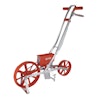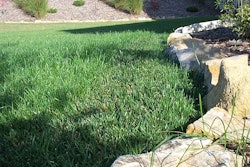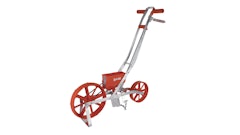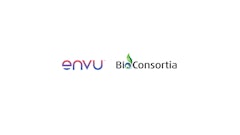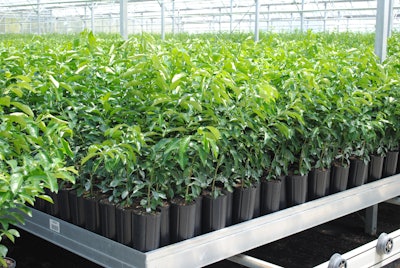
To be successful in the horticulture industry, so much of the work hinges on timing. Growers rely on precision at every stage to grow healthy plants, including knowing when to plant, when to water and when to fertilize, all down to an exact science.
But not every task needs to be micromanaged. In fact, controlled-release fertilizers (CRFs) remove the guesswork from fertilizing by delivering nutrients steadily over time. This reduces the frequency of applications without sacrificing plant health or yield, all while giving growers one less thing to worry about in their operation.
How Controlled-Release Fertilizers Work
Unlike traditional fertilizers, CRFs have a specialty coating to provide a consistent release of nutrition. In most instances, each prill has a polymer coating that releases key nutrients such as nitrogen, phosphorus, potassium and micronutrients slowly into the media. This consistent, gradual release reduces nutrient loss and leaching to support healthy, uniform growth. This design translates into better shelf life, reduced shrink, and less labor and product waste.
What About Traditional Fertilizers?
Because of its unique design, CRFs offer several benefits over traditional fertilizers. One of the most significant is the reduction in application frequency. Instead of weekly or biweekly liquid feeds, a single CRF application can support an entire crop cycle. This saves time, reduces or even eliminates tank mixing and leads to less labor overall.
CRFs also reduce nutrient waste. Because CRFs are specially coated, they don’t break down all at once. With traditional fertilizers, nutrients are lost because they release the nutrients all at once, which typically can’t all be taken up by the plant. CRFs provide a measured amount of nutrients over time, better meeting the nutritional needs of the plant. When CRFs are applied directly to the media, there are fewer losses due to runoff, which is especially important in container-grown crops and water-sensitive areas.  Profile Products LLC
Profile Products LLC
Another benefit is the consistency of nutrient delivery. CRFs offer a smooth, sustained release. There is a predictable release curve that supports healthy root development and uniform growth. Growers can expect dependable performance from every prill.
CRFs are also a more environmentally friendly option compared to traditional fertilizers because they minimize nutrient leaching and runoff, which can negatively impact surrounding ecosystems. Plus, because they require fewer applications, it lowers the carbon footprint associated with fertilizer production and transportation. As the industry moves toward more sustainable agricultural practices, CRFs fall in line with this approach.
While one of the main reasons to consider CRFs is to grow better plants, growers also need to consider how they’re going to grow better margins. Although CRFs may have a higher upfront cost per bag, they can reduce labor, lower application frequency, reduce equipment maintenance, and decrease nutrient losses, thus improving long-term return on investment (ROI). CRFs are the more cost-effective option when considering the different options available to provide nutrition to your plants. One application can last for an entire crop cycle, and it minimizes the risk of equipment failure, missed applications or excess irrigation that can flush away water-soluble fertilizers.
Application Tips:
Choosing the Right Methods to Match Your Operation
The method of application also plays a role in how effectively CRFs perform. CRFs aren’t one size fits all. There’s flexibility in how they’re applied depending on your operation.
First is top-dressing. This method applies the CRF to the surface of the media. It’s quick and easy, especially for reapplications. However, it can increase weed pressure and fertilizer can fall out of the container if the plant falls over.
Some growers will choose a dibble application by placing the fertilizer in a hole in the media and then placing the plug on top of the hole. While effective, this application should not be used on sensitive crops. It’s best to thoroughly trial this method prior to widespread implementation.
Growers can also subdress their crops. This method involves placing fertilizer just under the media surface for increased performance. With this application, the nutrients are kept near the root zone, and it minimizes weed growth.
The final application method is incorporation. The CRF is mixed into the media before potting. This allows for uniform distribution and is particularly cost-effective.
Whether a grower is managing thousands of containers or a small specialty operation, CRFs offer precision, reliability and long-term value. Their extended nutrient release supports season-long growth with fewer inputs.




